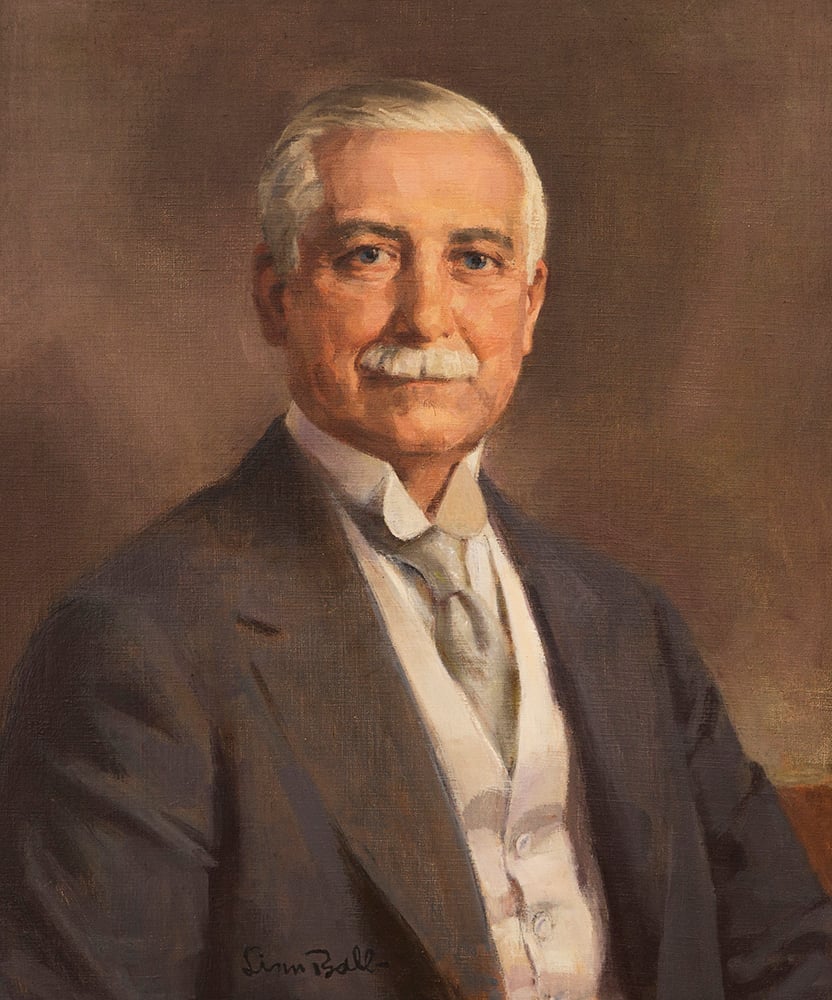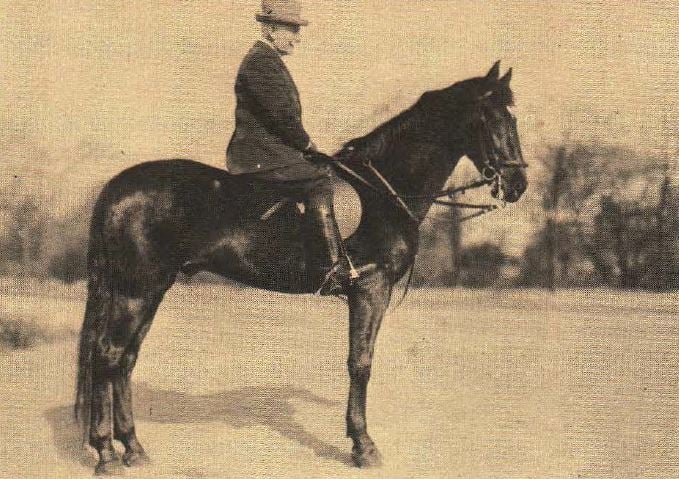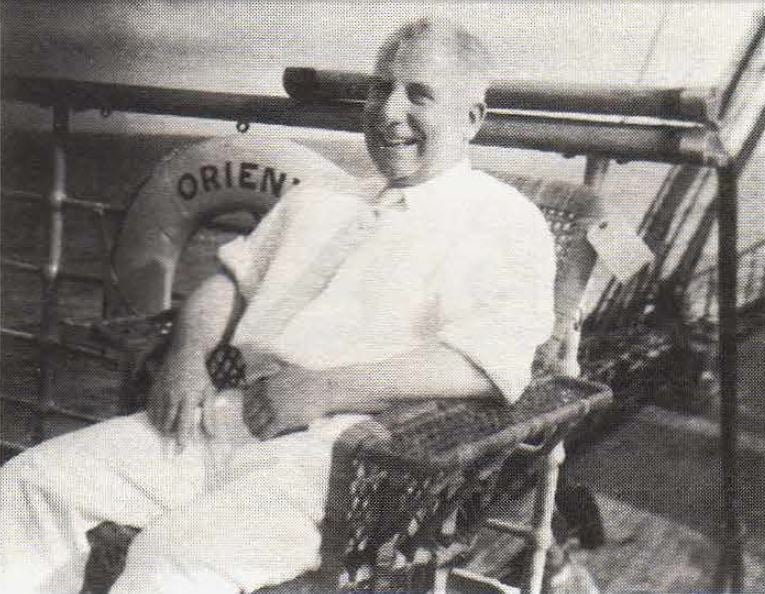
LIKE THE BIBLICAL servant who received ten talents of his master and increased them in like measure, Bicknell Young, nurtured in his youth in the Far West, wrought a full return for his rich native endowment.
Soon after their marriage, his father and mother, Joseph and Jane Bicknell Young, left Utica, New York, for the unknown West — a journey that was to last for more than ten years. Since early Colonial times, the families on both sides had lived in what is now known as Upper New York State. The young Utica couple joined with others who had come from the eastern seaboard on this journey into the vast uncharted areas of the West. They traveled in wagon trains, often stopping for long periods in favorable places, practicing their trades and skills to meet recurring needs. Companions left them along the way to establish farms or communities, but the Youngs continued the uncertain and hazardous journey until they arrived in the newly developing land of Utah. Within a few years they settled in Salt Lake City; there Bicknell Young was born, the youngest of a large family. The hardships endured by the parents demanded courage and resourcefulness which matured noble qualities of thought and action, bestowed in such large measure upon their young son.
By the 1870’s Salt Lake City was a thriving center attracting visits from successful eastern business men and, occasionally, friends of the arts. As a boy, Bicknell Young “took to his studies earnestly, gaining all that the western territories offered in the field of liberal education. He was a brilliant student, prepossessing in appearance and demeanor, with natural charm and a tremendous capacity for friendship. He was gifted with a beautiful voice, as well as with instinctive musical talent of a high order”1 which led him to decide on a musical career. When he made this decision, he followed through at great personal sacrifice and effort. An opportunity opened for him to study in the Royal College of Music, London, then under the distinguished patronage of the Prince of Wales, later King Edward VII. Among the members of the faculty was a brilliant young Italian-born musician, Elisa Mazzucato, whose father was head of the Milan Conservatory of Music and a director at La Scala. Kindred tastes and ideals drew the young people together and in due time they were married.
Bicknell Young graduated from the Royal College with high honors and he was urged by the faculty of the college to establish himself in England. He and Mrs. Young participated in oratorio performances of which he had made a special study, and sang in concerts in London and the provinces. About 1885, his great love for his country brought him with his family back to the West. He taught for some time in Utah when he was invited to join the faculty of the Chicago Conservatory of Music, continuing with this institution until he opened his own studio for voice training. Mrs. Young, always working with him, had her own students in voice, piano, harmony and composition.
Their work brought laurels to both. The music journal, Music and Musicians in Chicago, wrote of him as “a profound student of the voice and an expert in voice production,” and praised Mrs. Young for her highly successful teaching of harmony and composition and as a composer of distinction. Manuscripts of their compositions, which are referred to as “fresh jottings of your valuable musical minds”2 are preserved in the Library of Congress. Their recitals with Mrs. Young at the piano were acclaimed by The Journal of Fine Arts as “among the most artistic musical events in Chicago,” and said of Mr. and Mrs. Young, “Few musicians have done more for the advancement of all that is fine and classical in their art than Mr. and Mrs. Bicknell Young… He is a broad scholarly musician, who has made his art a life study…”
Early in the 1890’s Mr. Young was healed by Christian Science of an acute physical difficulty which had resisted ordinary modes of relief. At that time he had no religious affiliations and considered himself an agnostic. He began the serious study of Christian Science, as did Mrs. Young, and within a year they joined First Church of Christ, Scientist, in Chicago. Shortly thereafter, he became soloist for the church. In 1895 he and Mrs. Young had Primary Class with Edward A. Kimball, C.S.D., and in 1901 both entered Mr. Kimball’s Normal Class and received degrees of C.S.B. Mr. Young began teaching immediately and in his 1903 class his mother, Jane Bicknell Young, was a member.
The Christian Science movement was growing rapidly in Chicago. First Church was overcrowded and Christian Scientists living on the opposite side of the city united to organize Second Church in 1898. Mr. Young was elected First Reader. In 1902, when Mrs. Eddy limited the term of readership to three years, he immediately resigned because he had read beyond the time allotted. The following year, 1903, he was appointed to the Board of Lectureship of The Mother Church. In the intervening years he had served as Committee on Publication for Illinois and had maintained an extensive practice. His musical career had given way to the demands of work in a higher field.
From 1903 to 1927, Mr. Young served without interruption on the Lecture Board except for the three years when called to The Mother Church as First Reader. On July 17, 1904, he gave a memorable reading of Mrs. Eddy’ s address at the dedication of First Church of Christ, Scientist, in Concord, New Hampshire.

In 1907 Mr. Young was invited to lecture at the Albert Hall, London, filling the great hall seating 9,900 people, with many turned away. The next year he was asked to lecture in Australia. Accompanied by one of his sons, he sailed from San Francisco, stopping at important ports in the Pacific before arriving in Australia where he lectured in three cities. He headed west, passing through the rough Indian Ocean during the monsoon season, then through the Suez Canal and the Mediterranean Sea into Europe. After giving a number of lectures there, he returned to he United States, thus completing the first trip of a Christian Science lecturer around the world.
The following year, 1909, Mrs. Eddy requested Mr. and Mrs. Young to take up residence in England, which they did immediately, and remained there until 1913. He returned briefly in 1910 to teach the Normal Class of the Board of Education, and was present at the services for Mrs. Eddy on December 8, 1910, riding in the procession of carriages to Mount Auburn. During their years in England Mr. and Mrs. Young visited every Christian Science church and society in the European field. He made a trip on his own into Russia, where one registered practitioner in St. Petersburg was meeting with a small group to read the Lesson-Sermon.
In 1920, on completion of his assignment as First Reader of The Mother Church, Mr. Young resumed his work on the Lecture Board and served until 1927, when he resigned. He was recalled in 1932 to meet an emergency need to fill several previously arranged lecture engagements in Europe, and continued to lecture until 1936. He lectured over 24 years in all, often giving as many as 150 lectures a year, occasionally exceeding this number. In 1937, he again taught the Normal Class of the Board of Education.
Throughout his life, Bicknell Young enjoyed a deep love of the out-of-doors. He was a devoted horseman and mountaineer and for several years spent the month of August in the West, inviting a number of Christian Science friends to accompany him.

In a lecture given in 1922, Mr. Young made this comment, pertinent for today: “It [Christian Science] appeals to the higher nature, to reason and logic, and educates us in the Science of Life, the Science of real thinking, which is the greatest need of the age.” His impressive career brought the blessings of Christian Science to untold thousands throughout the world.